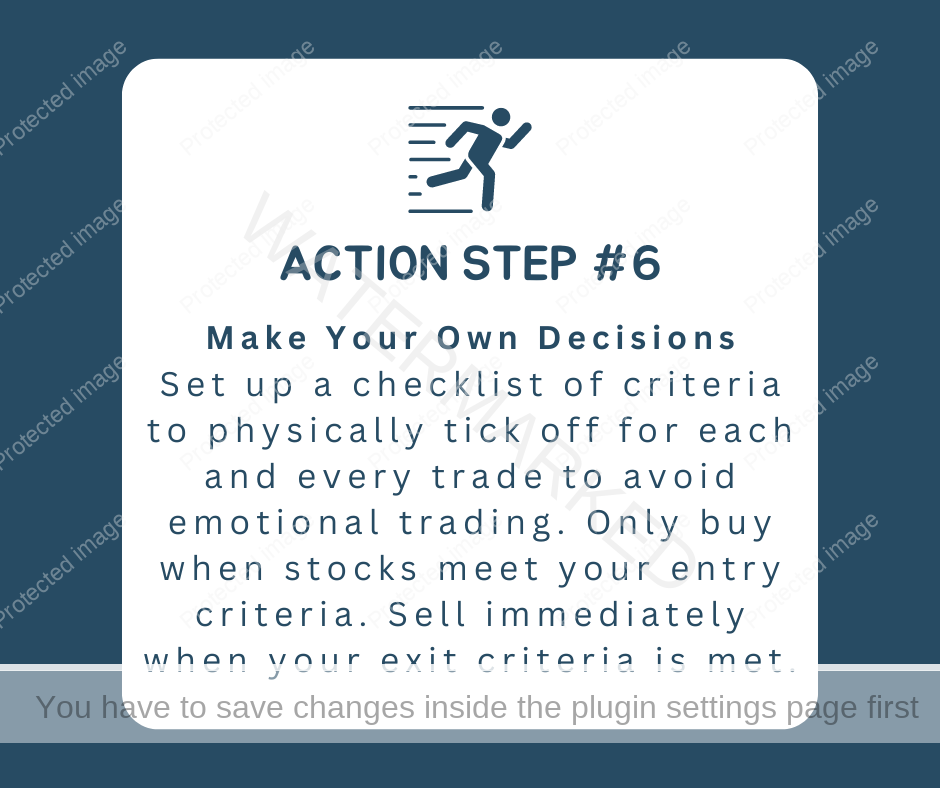
If you don’t have a complete plan, then you are not really in charge. Similarly, if you don’t make your own decisions you are also not really in control.
You should now be getting the picture that, contrary to popular belief, there is a lot more to trading than just picking winning stocks. Trading involves money management, stock selection, hours of analysis, buying, selling, and personal development.
However, if you don’t have the personal discipline to follow the plan and make your own decisions you will blow all of the good work you have done in developing your plan.
It can be very seductive to get involved in an investment because you “fear” that you will miss out. If this investment was not part of your plan then you should not get involved. This means that you cannot trade on advice from someone else. It also means that you must not take tips!
Trades based upon emotion rather than your plan will quickly eat into your investment capital. If you develop a mechanical approach rather than a system based upon your feelings at the time, then you will have overcome some very important stumbling blocks that have derailed many traders.

Set up a checklist of criteria to physically tick off for each and every trade. This will ensure you stick to your plan and make it easier for you to develop the discipline you need to be successful.
If nothing else, make sure you follow these two basic rules:
Only Buy When Stocks Meet Your Entry Criteria
No exceptions! Earlier we mentioned that it doesn’t matter how you select securities to purchase, as long as you are consistent. Regardless of the method you use, you do need to make sure you have a method and that you use this method consistently.
If you plan and then time your buying carefully you have half of the battle won! Be very selective and again set up a list of criteria to meet before a BUY is initiated. There is no such thing as you “thought it was a BUY”. Do all of the research first and make sure all or most of your BUY criteria are met. Then you will know it is a BUY. It is up to you to work out which criteria best fits your trading style.
Sell Immediately when your Exit Criteria is Met
You can see from the examples throughout this book what can happen when you don’t have an exit plan. Before you place your trade, make sure you know exactly when you are going to exit the trade. Don’t be fooled into thinking that you won’t become emotional once you have entered the trade. By systematically limiting your losses to small ones you will always be around to trade another day.
Similarly, make sure you have a system for protecting your profits if the share price goes up. Once profits have been made, protecting them is all important – otherwise it can all be in vain. Unless you are looking for long term investments, you should also have a “take profit” point established at the time of entering the trade. These stops are the best way of controlling the “fear and greed” that grips most traders and clouds their judgement.